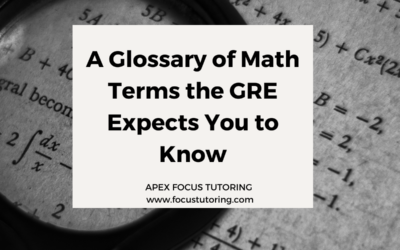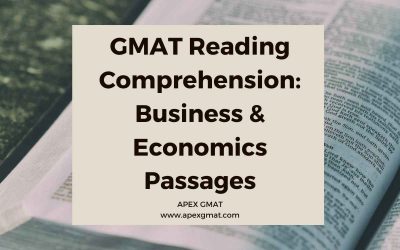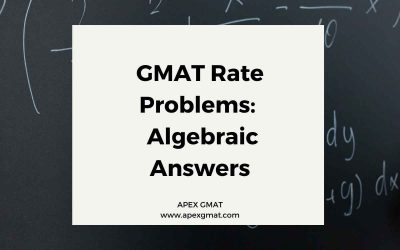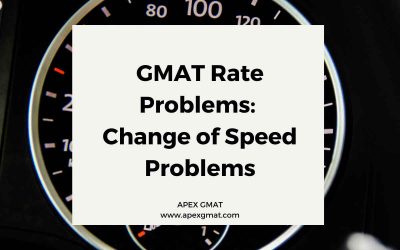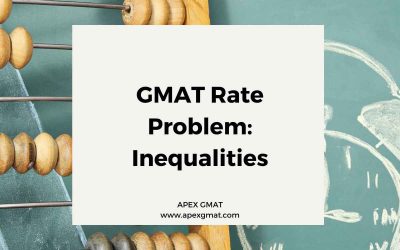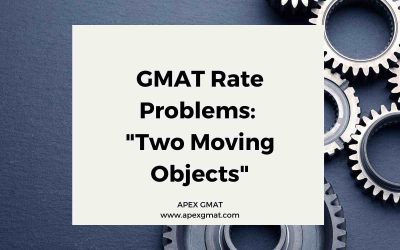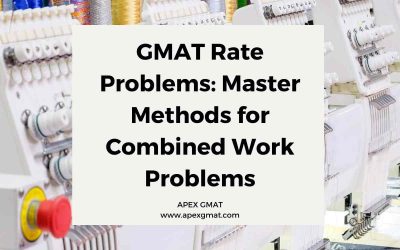Blog
Top Posts
GMAT Probability Problems and Questions
The concept of probability questions is often pretty straightforward to understand, but when it comes to its application in the GMAT test it may trip even the strongest mathematicians. In the GMAT exam, these questions are found in the Quantitative Reasoning section....
The Executive Assessment Integrated Reasoning Section
The Integrated Reasoning section of the Executive Assessment (EA) is all about synthesizing and analyzing data from multiple sources, a skill highly valued in executive roles. IR utilizes fundamental skills from both the quantitative and verbal reasoning sections...
EA Exam Day FAQs – Answered!
Here are some of the most frequently asked EA exam day questions we get from our clients. Our EA FAQs are here to help you prepare for your EA exam day. 1. When should I arrive at the test center on the test day? Short answer: about 30 minutes prior to the exam....
All Our Posts
When To Study For The GMAT?
Let's talk about how the time that you spend preparing and the relative yield you get from that time can change. 1. Time of Day Most of us have good times and bad times of the day, and that's tied in very deeply to our biology and our circadian rhythm. Most people...
A Glossary of Math Terms the GRE Expects You to Know
Have you begun studying for the GRE quantitative reasoning sections? Are you being held up by the recurring appearance of math terms whose definitions you don’t fully understand? We are here to help! Read through our glossary of math terms to know for GRE quantitative...
GMAT Study Schedule: How to Manage Your Time?
Preparing for the Graduate Management Admission Test (GMAT) requires dedication, discipline, and effective time management. A well-planned GMAT study schedule is crucial for success as it helps you allocate sufficient time to cover all the necessary content, practice...
Discover The Benefits Of Taking The GMAT
The GMAT (Graduate Management Admission Test) is a standardized exam, which is used by universities worldwide for their admissions processes for MBAs (Master of Business Administration) and other business-related programs. Passing the GMAT exam successfully enables...
GMAT Focus Edition Exam Sections
Are you preparing for the GMAT Focus Edition? This new version of the GMAT exam will launch in the second half of 2023. The updated test design includes content that is relevant to the current business challenges and opportunities, providing candidates with the...
GMAT Cancellation and Rescheduling Policy
Sometimes, due to unexpected events, you may need to change the date or cancel the scheduled GMAT exam. The GMAT cancellation policy allows test-takers to reschedule or cancel their exam appointment in case of unexpected events. However, the GMAT cancellation policy...
GMAT Accommodations for Test Takers with Disabilities
The GMAT exam is an important step for those pursuing a graduate business degree, but individuals with disabilities may face unique challenges when taking the GMAT exam. GMAT Accommodations for the Disabled are crucial for ensuring equal opportunity for all...
Best Tips to Deal with Post GMAT Anxiety
Post-exam anxiety is a common issue that many students face after taking important exams such as the GMAT. However, with the right strategies, it can be managed effectively. Uncertainty and self-doubt can negatively impact mental well-being and hinder the ability to...
GMAT RC: Social Science/Humanities Passages
Many GMAT candidates who struggle with Reading Comprehension are most challenged by passages belonging to the social science/humanities category. In these passages, the subject matter is the least familiar. But the real challenge for these passages is the fact that...
GMAT RC: Natural Science/Research Passages
GMAT Reading Comprehension passages belonging to the natural science/research category make for great attentive reading practice. They usually feature a level of technical information crucial to understanding the passage, but they often also involve a clash between...
GMAT RC: Business/Economics Passages
The last article in this series on the Verbal Reasoning section introduced a “three-track” attentiveness strategy for the GMAT Reading Comprehension Section: what the passage says | what the author is doing | what the author/subjects think This article will apply...
Common SC Errors: Comparisons and Contrasts
Comparing or contrasting two things or ideas is a common function of Sentence Correction questions on the GMAT. GMAT Comparison and contrast errors fall into two main categories: (1) using incorrect and unidiomatic wordings to express the comparison/contrast (2)...
GMAT Rate Problems: Algebraic Answers
Welcome back to our series on GMAT quant rate problems. In this final article, we’ll explore problems that have algebraic expressions as answer choices. You have a few options whenever you encounter one of these problems, but this article will focus on solving them by...
GMAT Rate Problems: Change of Speed Problems
Welcome back to our series on GMAT quant rate problems. In the last two articles, we saw how GMAT quant problems employ the concepts of average speed and instantaneous speed. This article will introduce methods for solving problems where the speed of a vehicle...
GMAT Rate Problems: Instantaneous Speed
Welcome back to our series on GMAT quant rate problems. In the last article, we learned about average speed and observed various ways that data sufficiency problems can try to “trick” test-takers with this concept. This article will contrast average speed against...
GMAT Rate Problems: Inequalities
Welcome back to our series on GMAT quant rate problems. The last article covered rate problems with geometry elements. In this article, we’ll see how rates are used in data sufficiency inequalities problems. Inequalities are a common form of data sufficiency problems,...
GMAT Rate Problems: Rates of Consumption of Fuel
Welcome back to our series on GMAT quant rate problems. In the last article, we learned about the usefulness of “machine hours” for solving problems featuring more than two or three machines. This article will prepare you for questions that involve rates of...
GMAT Rate Problems: Multiple Machines
Welcome back to our series on GMAT quant rate problems. In the last article, we studied problems where two objects are moving, either in the same direction or in opposite directions. This article will return to machines and address problems that feature more than two...
GMAT Rate Problems: “Two Moving Objects”
Welcome back to our series on GMAT quant rate problems. The last two articles covered machines working together to complete a job. This article addresses problems that have two objects moving at given speeds instead of two machines working at given rates. Recall from...
GMAT Rate Problems: Combined Work Problems
Welcome back to our series on GMAT quant rates problems. This article will build upon the last and prepare you to easily solve combined work problems. To begin, let’s review the standard formula we learned last time: (1 / c) = (1 / a) + (1 / b) where c is the combined...
Comprehensive GMAT Preparation
Step 1 – Complimentary Consultation
Step 2 – Assessment & Written Report
Step 3 – Work with a top scoring Apex trained instructor on your personalized prep plan.
Step 4 – Success
View our client success stories and find out how we position our clients to achieve and why we are the best choice for your success.
Book a Meeting Today!
Schedule a complimentary consultation call with one of our Instructors for Success with Apex . Act now as others have already done.





